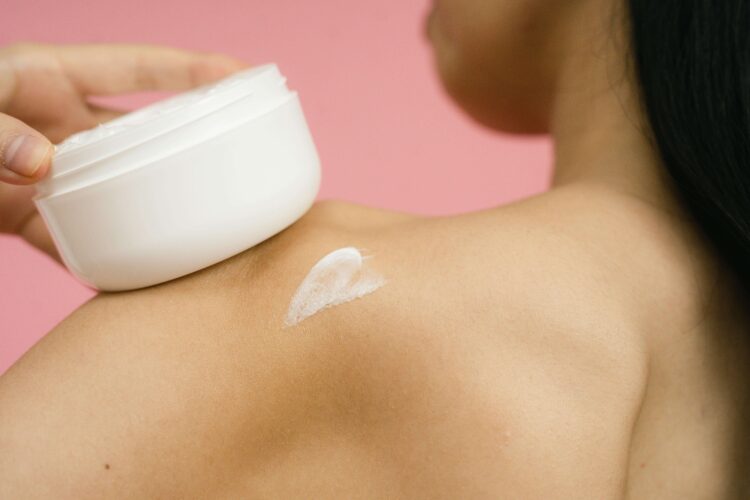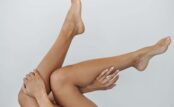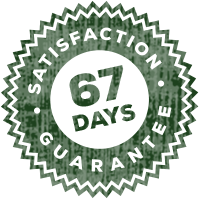Stretch marks are the unexpected tattoos life gives us without our consent. Those pesky lines that seem to have a mind of their own aren’t just a concern for women. Despite what social media might have you believe, both men and women can find themselves battling these stubborn streaks.
These natural badges of honor are incredibly common and nothing to be ashamed of, whether you’ve earned yours through a growth spurt, unexpected weight fluctuations, or intense weight lifting. Stretch marks can appear seemingly overnight, leaving you wondering how to tackle them.
While some wear their “tiger stripes” with pride, others prefer to send them packing. If you’ve ever found yourself scrutinizing those lines in the mirror, contemplating how to make them less noticeable – you’re in the right place.
Today, we discuss the different types of stretch marks, explore what causes these unwanted souvenirs, and offer a range of practical ways to manage their appearance. Whether you want to lighten new marks, fade older ones, or prevent new ones from forming, we’ve got you covered with simple home remedies, advanced medical options, and natural strategies.
Join us as we embark on this journey to smoother, more confident skin together.
What Are Stretch Marks and Why Do They Occur?
Striae, or stretch marks, are telltale lines that pop up when your skin has been pushed to its limits. They are scars that form when your skin stretches or shrinks too quickly, tearing the collagen and elastin in the deeper layers of your skin.
When your skin stretches beyond its capacity to bounce back, stretch marks form as the skin heals. The skin can only keep up with so much change before it starts leaving little reminders that you’re gaining muscle, packing on a few extra pounds, or expecting a baby. It’s the body saying, “That was a bit too much too fast!”
Commonly Affected Areas
Stretch marks can appear almost anywhere on the body but have a few favorite spots. The most common areas affected by stretch marks include the:
- thighs,
- hips,
- breasts,
- abdomen,
- upper arms, and
- lower back.
If you’ve ever gone through a growth spurt, hit the gym a little too enthusiastically, or indulged in one too many late-night snacks, you’ve probably noticed these lines making themselves at home in one of these areas.
So, whether you see them as battle scars from life’s adventures or something you’d rather minimize, understanding what causes stretch marks can help you decide how to tackle them.
What Causes Stretch Marks?
Stretch marks aren’t exclusive to any age or gender. Men and women can face these unwanted lines at various stages of life. No matter the cause, with the proper care, stretch marks don’t have to stick around forever.
Here are some additional reasons stretch marks can pop up when you least expect them:
- Puberty – Awkward teenage years can bring on stretch marks as the body goes through sudden growth spurts, leaving your skin to play catch up.
- Weight Gain – Rapid weight gain can lead to stretch marks, whether from enjoying too much comfort food or struggling with life’s changes.
- Weight Lifting and Muscle Growth – Stretch marks can be an unexpected side effect of bulking up too quickly as your muscles grow faster than your skin can keep up.
- Pregnancy – As your belly grows and hormones change, stretch marks become a frequent companion during this time.
For men, rapid muscle growth from bodybuilding sessions is a common culprit, while women often see stretch marks following rapid weight gain or loss or during pregnancy.
Whether experiencing the changes that come with pregnancy or sporting new gains from an intense phase of weight lifting, understanding stretch marks is the first step toward managing their appearance.
Types of Stretch Marks
When your skin’s elastic fibers, like collagen and elastin, are stretched too quickly, they tear, resulting in stretch marks that can sometimes be itchy and a bit raised.
Stretch marks range in color because they allow underlying blood vessels to show through. Let’s examine the differences:
- Red or Pink – These are called striae rubrae and are red or pink because the skin is still inflamed when stretch marks first appear. This stage is most responsive to treatment.
- White or Silver – These are called striae albae and indicate mature stretch marks. These older marks are more stubborn and challenging to treat but are less noticeable.
- Purple or Dark Brown – These are more common in people with darker skin tones. They are just as treatable as the lighter ones, just with a bit more flair.
Stretch marks are a common part of life. The good news is that while they are permanent, stretch marks tend to fade over time and can be managed with the right approach.
Next, we explore various ways to minimize the appearance of stretch marks.
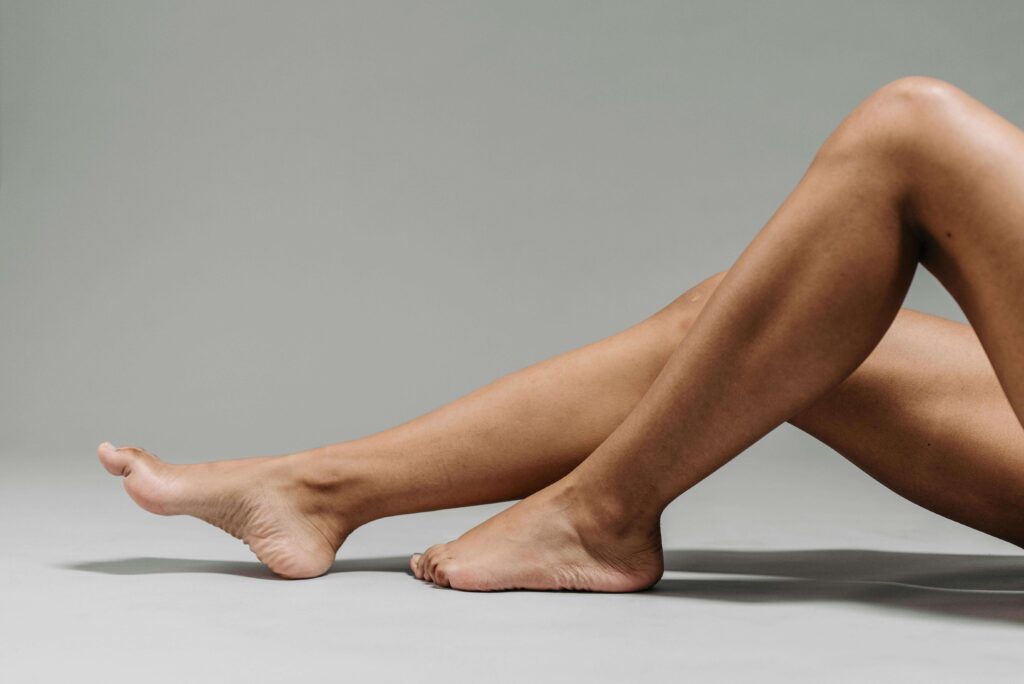
Home Remedies for Stretch Marks
Your kitchen might be hiding some surprisingly effective remedies for tackling stretch marks. While these home treatments might not make them vanish overnight, they can help fade and soften those telltale lines. Because who doesn’t love soft, supple skin?
One of the easiest and most effective ways to combat stretch marks is to keep your skin well-hydrated. Dry skin is more prone to tearing. So, lock in moisture and improve skin elasticity by slathering on products rich in shea butter, cocoa butter, or vitamin E.
The more hydrated your skin is, the better it can handle the stresses that cause stretch marks.
Lemon Juice
It’s not just for your morning detox drink anymore; lemon juice can be a powerful ally in lightening stretch marks. The natural acids in lemon juice act as a gentle exfoliant, which helps fade dark marks and even out skin tone.
Apply fresh lemon juice to the affected area, let it sit for about 10 minutes, and rinse it off. This helps give your stretch marks a little squeeze of vitamin C love.
Egg Whites
Egg whites might not be the most glamorous treatment, but they can help improve your skin. Egg whites are packed with proteins and amino acids and help heal and rejuvenate your skin.
Whip up an egg white mask, apply it to the affected area(s), and let it dry. Rinse it off and experience tighter, smoother skin.
Aloe Vera
Aloe vera is the ultimate skin soother and works wonders for stretch marks. Its healing properties help improve skin elasticity and repair damaged skin.
Apply pure aloe vera gel to stretch marks daily and let it soak in. Think of it as a spa day for your skin, keeping it smoother and well-moisturized while reducing the appearance of stretch marks.
Invasive Treatments for Stretch Marks
For those who want to take their stretch mark battle to the next level, there are more invasive treatments that may offer more intense results.
Here are a few intensive treatments:
- Laser Therapy – Breaks down stretch mark tissue using light to stimulate collagen production, fade stretch marks, and promote new skin growth. This high-tech treatment makes red and white stretch marks less visible.
- Microneedling – Creates micro-injuries in the skin, stimulating collagen production and prompting the body to ramp up its healing process to smooth out stretch marks over time. This treatment is also known as derma rolling.
- Chemical Peels – Exfoliates the skin deeply, peeling away the top layer to reveal fresher, less marked skin underneath and encouraging new skin to form.
- Surgery – Tummy tucks and other surgical options are a more drastic approach, usually reserved for extreme cases or those looking for a complete reset that removes stretch-marked skin altogether.
While these treatments can be effective, they come with a higher price tag, increased risk, and longer recovery time.
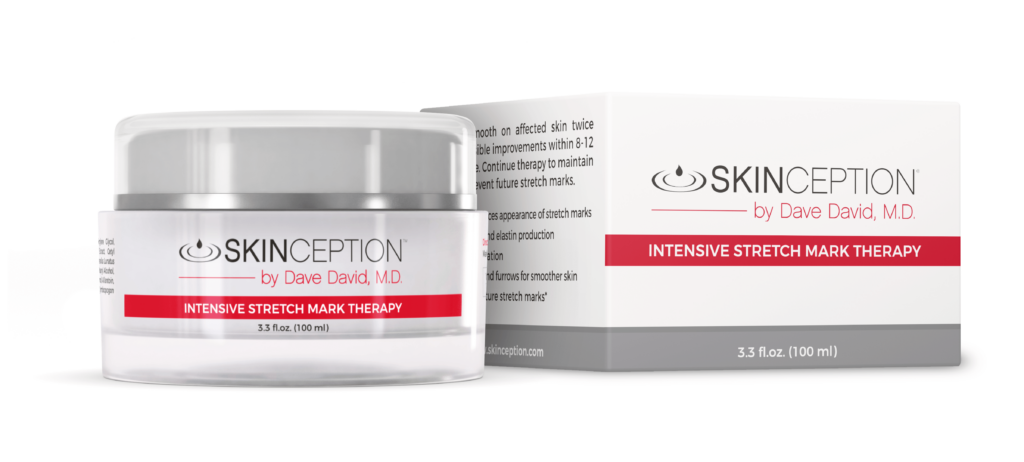
Natural Products for Stretch Marks
Over-the-counter creams and oils are a great way to naturally reduce the appearance of stretch marks. Regular application helps improve skin elasticity and makes stretch marks less noticeable over time.
Choose products containing ingredients known for their skin-repairing and skin-nourishing properties, like hyaluronic acid, retinoids, shea butter, or cocoa butter. Retinoids help boost collagen production, while cocoa and shea butter are excellent moisturizers.
Intensive Stretch Mark Therapy from Skinception is worth considering for a more targeted and science-backed option. It’s specially formulated to improve skin elasticity and tackle stretch marks head-on, whether they’re fresh or have been around for a while.
It’s ideally suited for those who prefer a non-invasive treatment that delivers results. The cream is clinically proven to reduce stretch marks’ depth, length, and discoloration, making your skin look smoother and more even.
Whether dealing with post-pregnancy marks or stretch marks from muscle growth, natural topicals like Intensive Stretch Mark Therapy can help promote skin regeneration and restore your skin’s natural beauty.
Embrace the Skin You’re In
Stretch marks might be a normal part of life, but that doesn’t mean you must live with them forever. There are plenty of options to help fade those lines and boost your confidence, from home remedies and natural over-the-counter topicals to more intensive treatments.
Everyone’s skin is different, so find what works best for you and stick with it. And love the skin you’re in – stretch marks and all!

